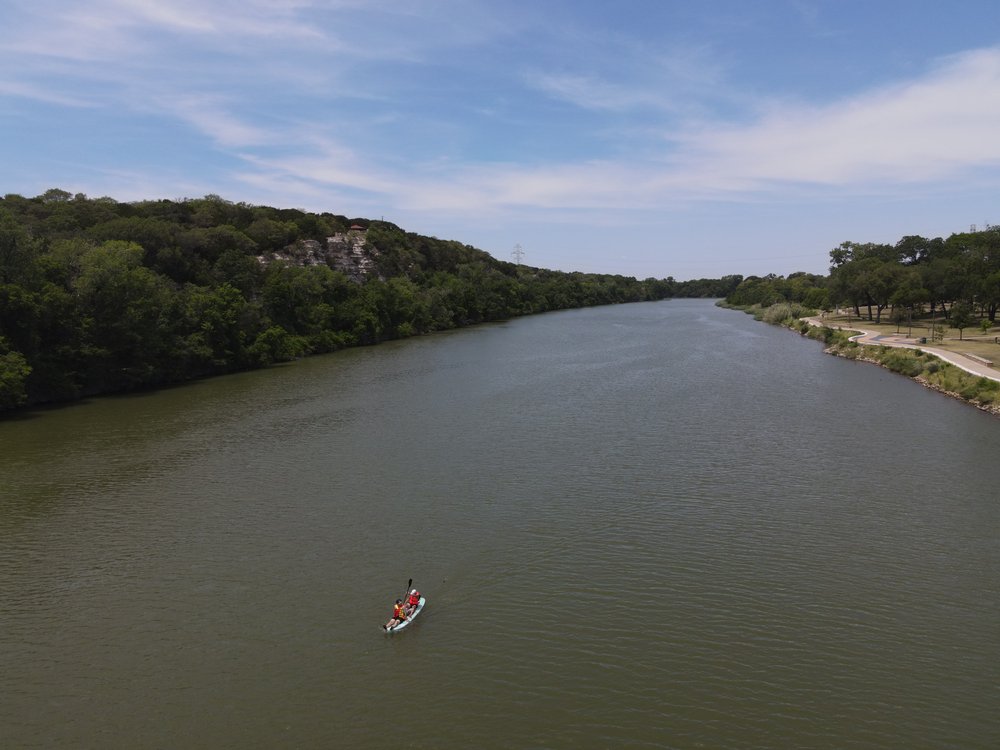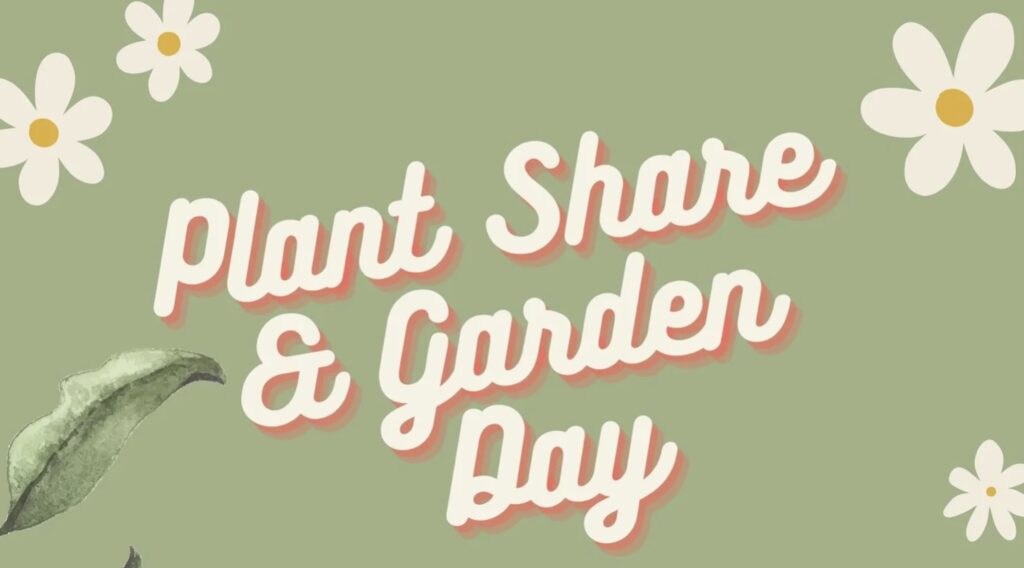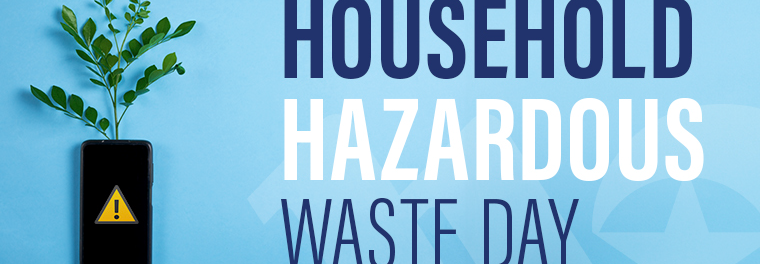by: Debbie Wright
As we gear up to celebrate St. Patrick’s Day, a holiday synonymous with the color green, let’s take a moment to reflect on how we can make our celebrations more eco-friendly and contribute positively to our community. This year, why not go beyond wearing green attire and consider participating in events that promote environmental consciousness and sustainability?
Community Composter Certification Course

March 14, 2024, marks the commencement of the Community Composter Certification Course, a remarkable initiative led by Emily Hills, the director of Urban REAP. This comprehensive program aims to educate residents of McLennan County about composting, fostering a network of compost educators and advocates within the community. Participants will delve into topics such as soil and decomposition, composting science, and community outreach, culminating in the creation of independent projects aimed at spreading awareness about composting. By participating in this course, individuals can not only enhance their understanding of sustainable practices but also actively contribute to reducing organic waste in our community.

Just a few days after St. Patrick’s Day, on March 22, we celebrate World Water Day. This year, let’s engage as a community to address water-related issues and promote conservation efforts. Take part in the Brazos River Cleanup and help keep our waterways pristine from 10am – 1pm. After the cleanup, head over to Indian Springs Park for a range of educational and interactive activities. Our partners, including Keep Waco Beautiful, City of Waco Watershed Protection, and more, will offer fun for all ages. Enjoy yard games, kids’ activities, free giveaways, and delicious food and drinks!
Backyard Composting Workshop – March 16
Looking for practical ways to reduce waste and enrich your garden soil? Attend the Backyard Composting Workshop on March 16th and learn how to start your own composting system. Gain valuable insights into the composting process and see firsthand how you can turn kitchen scraps and yard waste into nutrient-rich compost for your garden.
Spring Plant Share & Garden Day – March 16

Get into the spirit of spring by joining your neighbors at the Spring Plant Share & Garden Day. Share and adopt new plants, gather seeds, and participate in activities to prepare the Butterfly Sanctuary Garden for the season ahead. Learn from Master Gardeners, contribute to volunteer activities, and support the local ecosystem by donating plants for butterflies, pollinators, and birds.
Household Hazardous Waste Day – March 23

After the celebrations wind down, take the opportunity to declutter responsibly by participating in the Household Hazardous Waste Collection Day on March 23. Safely dispose of potentially hazardous items, ensuring they don’t harm the environment or endanger our community.
Companion Planting Workshop – March 30

Wrap up the month of March by attending the Companion Planting Workshop on March 30th. Discover the benefits of planting companions that help each other thrive in your garden space. Learn valuable tips from garden guru April Strickland and maximize the productivity of your garden while promoting biodiversity.
This St. Patrick’s Day, let’s go green in more ways than one. By engaging in these events and adopting sustainable practices, we can make a meaningful difference for our community and the planet. Join the movement towards a greener, more environmentally conscious future. Happy St. Patrick’s Day!
(For the other parts of this series, click here: Gardening Waco. — ALW)
By Aime Sommerfeld Lillard
This final instalment of Gardening Waco will come full circle back to community gardens in the area. The first thing I would like to draw attention to is that a community garden can be, but is not always, an allotment style garden. I believe that when the term community garden is thrown out, the vision that comes to mind often consists of a large plot of subdivided land where individual parcels are taken care of by families or groups. This type of garden system can be referred to as an allotment style garden. In these gardens, there is typically a written agreement, payment for “rent” or “lease” of the land, and rules that those participating are agreeing to abide by to be a part of that specific community.
Allotment style gardens are great. There is interest in Waco relating to this garden style both from potential participants and those wanting to provide the opportunity. However, regardless of garden style, it is important to fully understand the task at hand before breaking ground. What is the overall goal of the garden? What outcome do you (or your organization) want to see? Is your community garden: a) for the community, b) in a community, c) with the community? What/who is included in the working definition of your community? A garden is a project, or intervention if you will, that should be treated as any other community project to obtain maximum return on investment. Additionally, one doesn’t typically start a garden with an end date in mind, so there really shouldn’t be that stress of “hurrying” to get it finished. In actuality, the process has the opportunity to be as fulfilling as the product. It is also a way to provide involvement opportunities for some who don’t actually want to garden.
Another type of community garden is a garden that is designed for community interaction, with specific opportunities for “digging in the dirt.” This type of garden takes considerable planning and in my opinion, the more community input you have, the greater potential project sustainability. This garden is designed as a space to increase community socialization, provide a location for community activities, educate the community, support the community, and provide a few key individuals or organizations with an opportunity to share in care for something meaningful for their community.
I am extremely excited by a current opportunity to consult and design this type of garden here in Waco. Thanks to a Community Centered Health Homes (CCHH) grant from Episcopal Health Foundation to the Family Health Center, I am in year one of a three-year plan to create a community garden space on Colcord Avenue near the Madison Cooper Family Health Center Clinic.
You may be surprised that this is a three-year project, but that is one of the things I am most excited about. The extended time frame provides the opportunity to observe, network, speak with community members, clinic staff, surrounding neighbors and businesses to create a space with their needs in mind. It gives us time to find out how we could utilize the location to increase green space in the neighborhood, provide an area for small walking trails, a place for families to hang out, a place to hold programs, and place to learn about gardening and how it can be done in a variety of ways.
This first year it won’t really look like much is being accomplished. Priority is on community input, discovering ideas and elements for the garden that the surrounding community would like to see in the space. We know it is a garden; it will have herbs, it will have example vegetable beds, it will grow produce to demonstrate what is in the prescription veggie produce boxes, it will have seating and shade. We aren’t sure if the shade should come from trees or structures.
How important is it to have places to sit and converse in the garden? Do we need seats for two, or seats for a group to sit around and talk? Do we need tables for card games or neat features that will entertain children? I do know we need a doggie doo disposal system. How, you might ask? Well, we are watching the space. Right now, it is a vacant lot, but we want to see how it is currently utilized. What are traffic patterns, do groups stop to talk there, is there a bus stop nearby, which buildings provide foot traffic, and so on.
You might be reading this and thinking it sounds a little more like a park than a community garden. Here are some differences. The garden will be growing herbs and produce. The produce will be utilized in cooking demonstrations as well as be a teaching tool for “what can you grow right now.” It is likely we will have areas of the garden that can be “adopted” by an organization or group. However, I believe it is important for that support to come from within walking distance of the site. All of these things and many more will be decided as we have conversations and focus groups with our neighbors. This project is constantly evolving, what I have presented here has the possibility of changing, and I love that!
 Dr. Aime Sommerfeld Lillard has cultivated a love for nature and gardening through multiple outlets. Dr. Lillard is a Texas A&M graduate with a B.S. in Agricultural Leadership and Development and an M.S. and Ph.D. in Horticulture with a focus on human issues in horticulture. Currently, Dr. Lillard contracts with the Urban Gardening Coalition (UGC) for the Waco Health District’s Farmers Market Promotion Program Grant. She works in the Waco area through the vision of UGC to “strengthen local food production, improve access to healthy food, and empower folks to “grow their own” by creating a coalition that can impact a variety of horticultural education and grow through strategic partnerships.
Dr. Aime Sommerfeld Lillard has cultivated a love for nature and gardening through multiple outlets. Dr. Lillard is a Texas A&M graduate with a B.S. in Agricultural Leadership and Development and an M.S. and Ph.D. in Horticulture with a focus on human issues in horticulture. Currently, Dr. Lillard contracts with the Urban Gardening Coalition (UGC) for the Waco Health District’s Farmers Market Promotion Program Grant. She works in the Waco area through the vision of UGC to “strengthen local food production, improve access to healthy food, and empower folks to “grow their own” by creating a coalition that can impact a variety of horticultural education and grow through strategic partnerships.
(For the other parts of this series, click here: Gardening Waco. — ALW)
By Aime Sommerfeld Lillard
I’ve gone back and forth about the best way to talk about the benefits gardening provides. I’m sure some people would like a well-crafted research study that demonstrates statistically positive results of gardening. Others would prefer a simple story.
I will try to combine the two a bit while relying heavily on my personal experiences. My degree says “Horticulture”, but that doesn’t clearly define my field of study. Other names one may use are sociohorticulture, people-plant interactions, and horticultural therapy (which is really its own branch of therapy).
Through many conversations about gardening I have learned that for most people it seems the garden itself, whether it is a community or school garden, is seen as the end-product. I would prefer the garden be seen as a location for a multitude of interactions. These interactions can be between individuals and plants, or between people. Have you noticed that the weather is a pretty safe topic of conversation? A garden will function similarly if individuals are given some basic exposure to growing or green spaces.
I will start with my experience installing a garden at a Montessori preschool that served kiddos infant to 5 years and a few older ones in an after-school group. I was looking at visual motor integration and delay of gratification with pre and post testing measures from ages 2.5 years up. I was working with a range of children from different socioeconomic levels, ethnicities, and various upbringings.
My first big “Oh my” moment came after we had our family engagement day to build the garden and I had done a couple of inside lessons. We were ready to start working in the garden. I knew I could only handle 3-5 kids at a time due to their age. The garden was fenced and adjacent to the playground area. My idea was to go down the roster and have the kids come in as class groups. By the time I had things set up in the garden and turned around there was a line of kids waiting by the gate at the fence. And by “line of kids” I mean practically everyone on the playground was crowded around the fence.
Cue the delay of gratification practice. Here I thought it was going to come from seed germination, plant growth, and waiting for harvest. Well, it came a lot quicker than that! Pretty much immediately I had kids crying because they didn’t get to go in the first group, or the second. I admit, standing in the garden watching little kids bawl on the other side of the fence because they wanted to come garden was not what I had prepared for!
With the teachers help we created a system so that those who wanted to garden sat at a designated spot in a line until it was their turn. I kid you not, there were kids who would leave playtime to come sit at the end of the line and wait for 10 minutes to go in the garden and cut three leaves off of a collards plant. Color me impressed.
I briefly want to mention a couple of other experiences during that project. There were two little boys who were high energy and had difficulty focusing in a classroom setting. I was a little worried about having them in the garden, but they were no different than the other kids. One day, we were transplanting, and I set one of the boys to work on that job. He was supposed to plant about 5 plants out of the tray of 35. Forty-five minutes later he finished all the plants. Did I need them all done? No. Did his “turn” in the garden end before that? Sure. However, I just let him work while I cleaned up and his teachers let him stay outside to finish his work. At the end of the day we got to see his pride as he and the teachers brought his mom out to see his work. Was it worth my extra time and flexibility of schedule? No question.
Another time a little girl transferred to the school who didn’t speak (much) English. She wouldn’t go into the room to be tested with me for our pre-test measures, but she waited with everyone else to work with me in the garden. It was easy to see that the garden was comfortable for her, she could point, dig, plant, and harvest just as well as anyone else. Here was a place she could gain confidence, be herself, and not deal with barriers she experienced in the classroom.
One of my favorite memories when I was working in a long-term care facility was cleaning up after a planting project. Ladies came out with their walkers, air pumps, and wheelchairs to watch and participate. When I was putting things away after the project, I turned around and encountered a walker pushed up against the wall outside. Turns out carrying a plant to your room can be more important than taking your walker. This still warms my heart, knowing that for that time, her focus was clearly on something else. A hope for life, for growth, for an experience.
What I ask you to consider after reading this is how the garden offered a setting for these encounters. It was not gardening itself, or the physical labor. Simply by being there, and being available, the garden is a place where growth and experiences can happen. A garden provides the potential for growing pride, growing food, growing communication, and growing community.
 Dr. Aime Sommerfeld Lillard has cultivated a love for nature and gardening through multiple outlets. Dr. Lillard is a Texas A&M graduate with a B.S. in Agricultural Leadership and Development and an M.S. and Ph.D. in Horticulture with a focus on human issues in horticulture. Currently, Dr. Lillard contracts with the Urban Gardening Coalition (UGC) for the Waco Health District’s Farmers Market Promotion Program Grant. She works in the Waco area through the vision of UGC to “strengthen local food production, improve access to healthy food, and empower folks to “grow their own” by creating a coalition that can impact a variety of horticultural education and grow through strategic partnerships.
Dr. Aime Sommerfeld Lillard has cultivated a love for nature and gardening through multiple outlets. Dr. Lillard is a Texas A&M graduate with a B.S. in Agricultural Leadership and Development and an M.S. and Ph.D. in Horticulture with a focus on human issues in horticulture. Currently, Dr. Lillard contracts with the Urban Gardening Coalition (UGC) for the Waco Health District’s Farmers Market Promotion Program Grant. She works in the Waco area through the vision of UGC to “strengthen local food production, improve access to healthy food, and empower folks to “grow their own” by creating a coalition that can impact a variety of horticultural education and grow through strategic partnerships.
(For the other parts of this series, click here: Gardening Waco. — ALW)
By Aime Sommerfeld-Lillard
Let’s talk about gardens. I’ve had a lot of conversations about gardens lately. Backyard gardens, producing gardens, school gardens or community gardens… all kinds of gardens.
Hold on to your seats for this part. Imagine: to some people a garden isn’t food or rows of vegetables!
That realization was a bit hard for me to swallow. I’ll never forget walking along the Texas A&M campus one day with my niece Grace when she said, “Oh, look at that garden!” I saw a 4×4 planting of stoic pansies marching in obedient lines in the middle of a sea of concrete, but she saw a garden. Life changing realization from a 6-year-old! I grew up harvesting vegetables from the garden with my Nonna and taking them to the house for lunch. Grace grew up watching her mom work with roses when her mom had time to spare. To me gardens were (still mostly are) food, and roses are a lot of work for something you can’t even eat. But this experience did make me realize that I was missing a large piece of what it meant to “be a gardener.”
As a researcher studying gardeners, this led me to stretch my thinking. I was curious what it meant to different individuals to be a gardener, or even what images came to mind when someone heard the word “garden.” Were they the same for similar age groups? Did rural vs urban make a difference? This led me down the rabbit hole of attempting a qualitative study looking at reasons people may garden at different stages of their lives. Somewhere along the way that project morphed into hearing stories of some lifelong gardeners and the role gardening played in their lives.
As fascinating as this was (and I sincerely hope I still have those transcripts), it was difficult research to craft a thesis around. So, I moved on to a different study that found adults over the age of 50 who reported themselves to be gardeners, also reported statistically higher quality of life measures. As a researcher this is great!
As I looked closely at the data, there were some interesting trends. Shockingly (to me), once again, these self-selected gardeners were not saying they grew food to eat. Several did grow herbs, but occasionally I would see that a “gardener” simply engaged in what I would call “yard work.” What this highlighted to me is that what a person considers to be “gardening” is highly dependent upon a person’s state of mind or personal perception.
Without looking back at original data from these studies, what I mostly remember is a question asking about earliest memories of a garden. Responses were very family centered, “I was with my mom…”; “I used to help my grandpa…”; “We would always…” The first garden memory was typically a social interaction in the garden, typically a positive memory, there was often learning involved, pride, and there were always details.
I’ve been working with the Carver Neighborhood Family Garden recently. I just love the name they’ve chosen because I feel like it appropriately describes their goal as a garden. A family or group of families is gardening for the neighborhood with the intent to share what they grow with those around them. This group is creating an opportunity for others based on their knowledge, skills, and belief that something like gardening is important. Important enough to spend their own time, funds, and energy to provide a demonstration for others.
Gardening can be a state of mind. It doesn’t really matter what you are producing or the process you are using to achieve your goals. It is most important to have goals, believe in them, share your stories, and – every once in a while – get your hands a little dirty. Assuming the quote is properly attributed I think there is a profound wisdom and a lesson for all in Audrey Hepburn’s statement, “To plant a garden is to believe in tomorrow.”
Take a moment. Think back and recall some of your earliest memories. Think of some of your fondest memories. Take note of how nature plays a part in the details or the setting of some of your fondest memories.
If you recall natural settings or gardens as some of your fondest memories, compare the nature surrounding you at that time with what is available today. Available to ourselves, but also to our children, our parents, our grandparents. How do we as a society provide these important interactions, lessons, and opportunities for growth with those around us and those who depend on us to teach them?
 Dr. Aime Sommerfeld Lillard has cultivated a love for nature and gardening through multiple outlets. Dr. Lillard is a Texas A&M graduate with a B.S. in Agricultural Leadership and Development and an M.S. and Ph.D. in Horticulture with a focus on human issues in horticulture. Currently, Dr. Lillard contracts with the Urban Gardening Coalition (UGC) for the Waco Health District’s Farmers Market Promotion Program Grant. She works in the Waco area through the vision of UGC to “strengthen local food production, improve access to healthy food, and empower folks to “grow their own” by creating a coalition that can impact a variety of horticultural education and grow through strategic partnerships.
Dr. Aime Sommerfeld Lillard has cultivated a love for nature and gardening through multiple outlets. Dr. Lillard is a Texas A&M graduate with a B.S. in Agricultural Leadership and Development and an M.S. and Ph.D. in Horticulture with a focus on human issues in horticulture. Currently, Dr. Lillard contracts with the Urban Gardening Coalition (UGC) for the Waco Health District’s Farmers Market Promotion Program Grant. She works in the Waco area through the vision of UGC to “strengthen local food production, improve access to healthy food, and empower folks to “grow their own” by creating a coalition that can impact a variety of horticultural education and grow through strategic partnerships.
